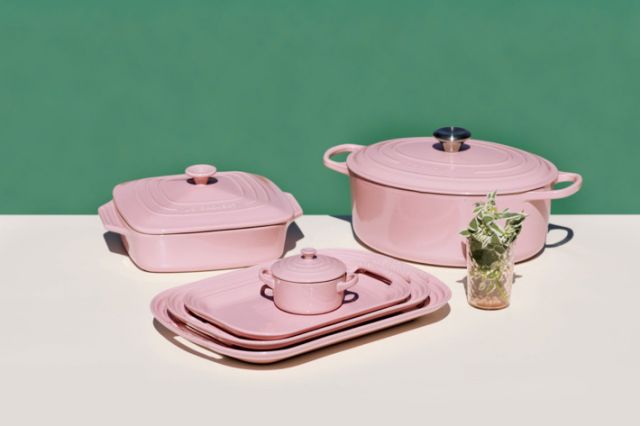#feministfriday episode 137 | In The Pink
Good morning,
I’ve been chastised, recently, for covering abstruse topics such as Kevlar and ignoring what is perhaps more fun and accessible #content. In response to this feedback, Kylie, I have created a fem Friday guaranteed to entertain as well as engage, and remember, you’ll be grateful for Kevlar when you need to buy a bullet proof vest!
When I saw the link to this article – Why Millennial Pink Refuses To Go Away – I did not know which pink that meant, and had not realised that there is a shade of pink that I see everywhere, all the time, and had never thought to name. I enjoyed both reading the history of this colour and looking at the pretty pictures:
For one thing, with Millennial Pink, gone is the girly-girl baggage; now it’s androgynous. (Interestingly, back in 1918, the trade publication Earnshaw’s Infants’ Department published an article saying, “The generally accepted rule is pink for the boys, and blue for the girls.”) In these Instagram-filtered times, it doesn’t hurt that the color happens to be both flattering and generally pleasing to the eye, but it also speaks to an era in which trans models walk the runway, gender-neutral clothing lines are the thing, and man-buns abound.
http://nymag.com/thecut/2017/03/why-millennial-pink-refuses-to-go-away.html
My favourite picture from that article is of the new Le Creuset pots in millennial pink. They would look hideous in my home, but probably perfect in yours, so if you buy them, would you send me some photos? Cheers.
 The first time Le Creuset made their pots in a different colour from their standard sort of burnt orange it was for Elizabeth David, pioneer of non-depressing food as Britain emerged from an era of rationing. Her pots were blue, apparently inspired by the Galouise cigarettes of which she was so fond. If you’re wondering how depressing British food was during and after the Second World War, and what Elizabeth David did to kick it up a notch, wonder no further:
The first time Le Creuset made their pots in a different colour from their standard sort of burnt orange it was for Elizabeth David, pioneer of non-depressing food as Britain emerged from an era of rationing. Her pots were blue, apparently inspired by the Galouise cigarettes of which she was so fond. If you’re wondering how depressing British food was during and after the Second World War, and what Elizabeth David did to kick it up a notch, wonder no further:
To understand Elizabeth David, and her place in the history of the mysterious eating habits of these islands, one must have some sense of what it was like to live through the second world war. Last summer, I spent several days in the British Library reading austerity cookbooks: survival manuals for housewives who had to cope with the rationing that would outlast the war by several years (butter, cheese, margarine, cooking fats and meat did not come off the ration until 1954). In my locker downstairs, my (Elizabeth David-approved) lunchtime sandwich of prosciutto and brie patiently awaited my return, but even so, it was a dispiriting business. Before me were the least appealing recipes ever written: mock marzipan cobbled from haricot beans and almond essence; "eggs" that were tinned apricots fried in bacon fat. I opened one book, and realised with a horrible gulp that I was looking at advice for cooking crow. "Boil it up with suet," said the writer, "to keep the meat as white as possible." There was a recipe for sparrow pie too – though the Ministry of Food did not "encourage" the eating of these tiny birds.
https://www.theguardian.com/lifeandstyle/2013/dec/08/elizabeth-david-first-lady-of-food
While we’re on the topic of famous women cooking, CHECK OUT this Delia Smith fact, this is incredible. The book, if you are interested, is Joe Moran’s Armchair Nation:

Finally, it’s not to do with women or cooking or pink, but it’s to do with my best friend and I’m so happy for and proud of her I could explode:
Charlotte Gill always had a sense of fair play. She was especially concerned when she heard of failures in the criminal justice system, which was among the reasons she pursued a bachelor’s degree in law from the University of Cambridge. But her studies also pushed her in a different direction, one that brought the assistant professor in George Mason University’s Department of Criminology, Law and Society to what she called the shocking announcement she has been awarded a Carnegie Fellowship by the Carnegie Corporation of New York.
https://www2.gmu.edu/news/395036
Happy Friday!
Alex.